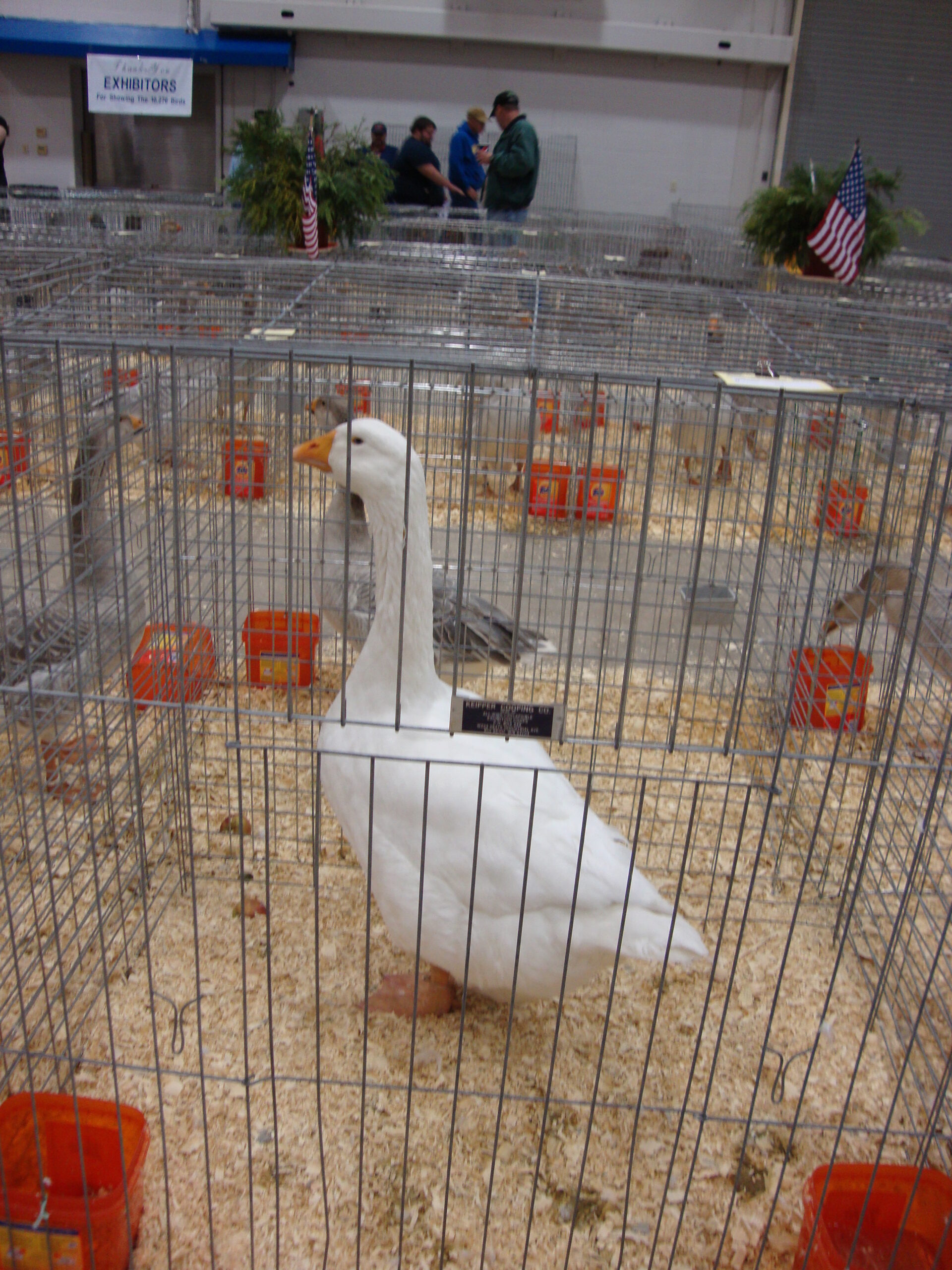Dominant Breeds of Geese History
This article on the brief history of dominant breeds of geese is being republished from Acorn Hollow Bantams website with permission from Lou Horton.
One of the advantages of looking back over a long period of time at the exhibition waterfowl scene is that one can gain a perspective that shorter term exhibitors may lack. Having begun showing poultry in the mid 1960’s, I have had the opportunity to witness the rise and fall (and rise again) of many breeds of waterfowl in terms of quality and popularity with breeders and exhibitors.
As I recall, three breeds were the dominant breeds of geese who were most consistently winners back in the 1960s and early 1970s. The first is perhaps no surprise – the Embden. This magnificent breed was blessed at the time with some dedicated breeders who honored the breed’s authentic type and did not sacrifice it for the sake of increased size. I would include people like Al Barry, Rolla Henry, and Rodney Dannehl in that group. I am sure that there were others. As a result, Embdens more than held their own at even the largest waterfowl shows.
The second breed (more accurately, a variety) that seemed to be frequent winners were the Brown Chinas. The most well known strain belonged to the late Henry Miller but very good Brown Chinas were being raised in Minnesota also. They were stylish and refined, unlike the Whites at the time.

The third and perhaps the most dominant of the breeds of geese back in the 1960s and 1970s was the African. Two lines dominate my memories of them at least through the early 1970s. Chuck Oltersdorf (then of Michigan) and Roger Sanford (of Mass.) each raised excellent lines led by an outstanding male. They and their offspring dominated the goose classes for years. In later years, the late David Reath carried on with the Africans (and Toulouse, which he helped resurrect).
I feel the need to also mention the Egyptian goose as a notable breed of the time period being discussed. A strain of Egyptians was developed by Myron Buelow of Minnesota that possessed the most striking color I have ever seen before or since. After Myron’s death, Duane Urch continued the breeding work with the Buelow line of Egyptians. Duane’s line remains the gold standard in terms of Egyptian goose color to this day.
I am sure that many are wondering about the Toulouse, so prominent in today’s shows. The fact is, that the Toulouse were in a sad state of disrepair back in the late 1960s. Age had caught up with the two most notable breeders of Toulouse at the time, namely Maxine McKeebe and Oscar Grow and for a time no one picked up the challenge of breeding such a difficult to reproduce goose. In the late 1970s David Reath began a breeding program that inspired a number of others to work with the Toulouse and today, they are being raised to a high level of quality.
There were other good specimens, of course, being exhibited in individual breeds but none of the other breeds I can recollect as being dominant. It was in the late 1970s and 80s that the Sebastopol burst on to the scene in the capable hands of Bill Garber of Canada. Last but certainly not least, David Holderread’s wonderful work with many breeds of geese over the last thirty or so years is worth noting. Dave has been perhaps the greatest bearer of the legacy of the many breeders of geese that came before him during the last several decades.
In terms of the history of a single breed, I would like to mention the work Paul Ashbrook (now of Ohio) did with the Pilgrim. Primarily a male line, his birds dominated the competition for over ten years. Recently, he has taken them up again along with the Cayugas that he also did so well with over a decade or so. He obtained seed stock in both breeds from the Kershaws of Wisconsin who have also done wonderful work with both breeds.
By Lou Horton
